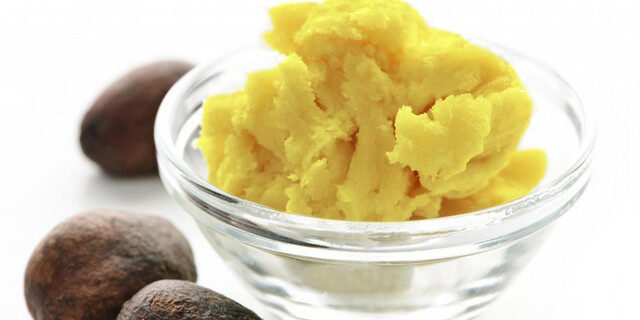Shea butter
Shea butter is made from the seed of the fruit of the shea nut tree (Vitellaria paradoxa). The fallen fruits are boiled and dried in the sun. The seed is removed, crushed and an oily substance is obtained. Making shea butter from the fruits is a traditional skill that is passed down and followed by generations of the people where the tree grows.
Shea butter contains a high concentration (45%) of oleic acid, which gives shea butter its special properties. There is about the same amount of stearic acid. Oleic acid, in turn, belongs to omega-9 fatty acids, which help the skin to regenerate and maintain a youthful appearance. On the other hand, oleic acid can promote sebum production and shea butter is therefore unsuitable for acne-prone skin. Shea butter already melts at body temperature.
Shea butter moisturizes, softens and protects the skin. It also helps with itching, cracks and soreness. Used with anti-aging and anti-inflammatory properties in mind. Good results have been shown for eczema. In Central Africa, the traditional use of shea butter is for skin problems. The main traditional uses have been for wounds and itches. In Africa, shea butter is used, among other things, in cooking.
